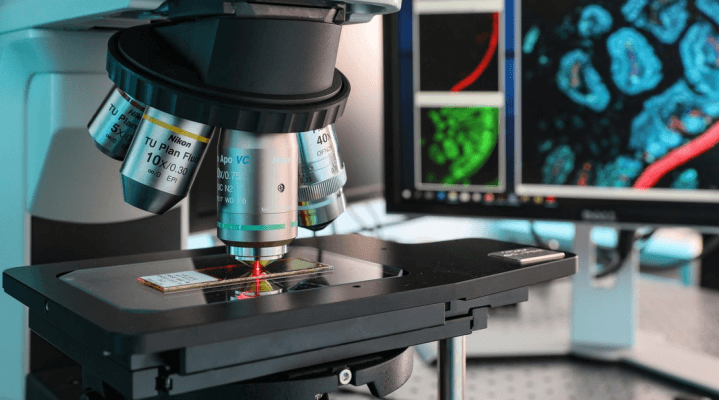Fluorescence microscopy

Optical filters are essential components of fluorescence microscopes, as they allow the selective passage of specific wavelengths of light while blocking unwanted wavelengths. In fluorescence microscopy, optical filters are used to separate the excitation light from the emission light, which is critical for achieving high-resolution images with high signal-to-noise ratio. Here are the main types of optical filters used in fluorescence microscopy:
Excitation filters: Excitation filters are placed in the excitation light path, and they allow the selective passage of the wavelength of light used to excite the fluorescent probe.
Emission filters: Emission filters are placed in the emission light path, and they allow the selective passage of the fluorescence emission of interest while blocking other wavelengths.
Dichroic mirrors: Dichroic mirrors, also known as beamsplitters, are placed between the excitation filter and the sample. Dichroic mirrors reflect the excitation light towards the sample and allow the fluorescence emission to pass through to the detector.
The selection of excitation and emission wavelengths in fluorescence microscopy is critical for obtaining high-quality images and accurate measurements of fluorescent signals. The appropriate choice of filters and light sources can enhance sensitivity and minimize background interference, leading to more precise and reliable data.
Some common wavelengths used in fluorescence microscopy include:
365 nm: Used for excitation of blue-fluorescent dyes, such as DAPI and Hoechst.
405 nm: Used for excitation of blue-fluorescent dyes, such as DAPI and Hoechst, as well as green-fluorescent dyes like GFP.
488 nm: Used for excitation of green-fluorescent dyes, such as GFP and FITC.
514 nm: Used for excitation of green-fluorescent dyes, such as GFP and FITC.
561 nm: Used for excitation of red-fluorescent dyes, such as Texas Red and Cy3.
633 nm: Used for excitation of far-red fluorescent dyes, such as Cy5 and Alexa Fluor 647.
In general, the choice of excitation and emission wavelengths depends on the specific fluorophore being used.
Coligh’s fluorescence filters are made of high-quality materials and have been optimized for maximum transmission, blocking, and durability. They are available in a range of sizes and configurations to fit your specific application needs.



